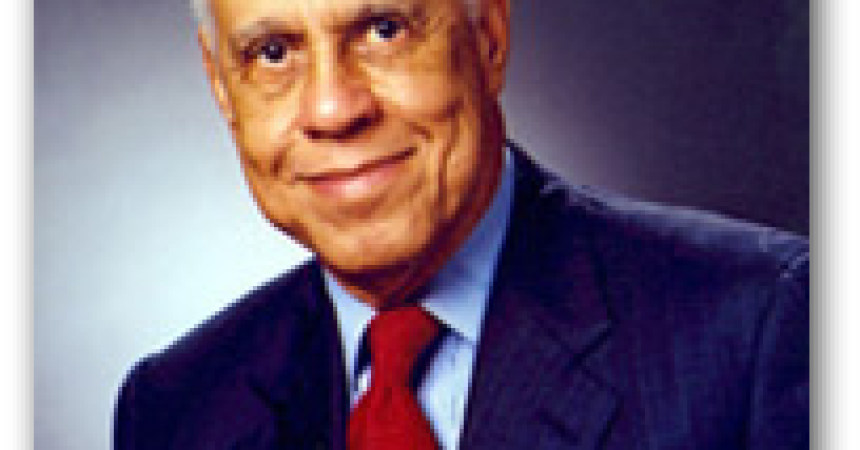
Black Newspaper Revealed History of Fight Against Racist Emblem
By Hazel Trice Edney
Trice Edney News Wire
It was mid-summer 1992 when the Black airman of the Virginia Air National Guard walked into the Richmond Free Press newsroom and asked to see a reporter.
After he placed the stack of photos on my desk, asked for anonymity and expressed his complaint, I literally ran up the stairs to the office of now late Free Press Editor-in-Chief Ray Boone and showed him what the source had revealed. The next Free Press edition, July 23-25, the banner headline declared: “Confederate flags on state planes.”
The removal of the Confederate flag from the state capitol grounds in South Carolina and the continuing debates over the racist Confederal symbols, recall for me this specific moment in Black press history. Alongside the Free Press headline was the photograph as proof of the symbol on the Virginia military planes.
In a nutshell, the lead paragraph told the story: “The Confederate flag – the symbol of slavery and banner of hate groups in America – is emblazoned on 149th Fighter Squadron planes of the Virginia Air National Guard, based at Richmond International Airport…”
It further reported that “The emblem was adopted by the unit when it was first formed in 1947,” that some airmen had worn it on their uniforms and that there were “imminent plans to put the hate symbol on all of the new planes of this squadron, as well as on the squadron’s Air National Guard uniforms.”
With only six African-Americans out of 50 airmen then members of the 149th, there was little empathy for the offended Black airmen – even when they complained and took action by refusing to serve people wearing the emblem in the cafeteria. The emblems had in fact been approved for use on the military planes and uniforms by the U.S. Department of Defense. They had also been copyrighted.
Major Stewart MacInnis, a White public affairs officer, defiantly said in a Free Press interview for that first story, “Anybody who’s offended by it, I’m surprised that they’d even join the unit…Nobody’s forced to join…”
On the other hand, the African-Americans in the unit feared for their jobs if they consistently complained. But help was on the way. Then Gov. L. Douglas Wilder, America’s first-elected Black governor, had read the story and a scathing editorial written by Mr. Boone.
The very next Free Press edition, July 30-Aug. 1, 1992, published an epic headline: “Governor Wipes Out Rebel Flag – Free Press Story Gets Quick Results”.
Under the headline, a picture of Gov. Wilder, commander-in-chief of the Virginia Air National Guard, sitting behind his desk with a clenched fist, and a photo of an executive order, stating, “I hereby direct you to take all measures necessary to replace the flag being employed in the emblem of the 149th Fighter Squadron, 192nd Fighter Group, Virginia Air National Guard, with the flag of the United states of America. This replacement shall be carried out on all equipment and uniforms of this unit, effective immediately.”
The order was met with compliance. Maj. Gen. John G. Castles ordered the removals, stating, “I answer to the governor. I am a soldier.” The flag emblem was removed, but not the racism for which it stood. In the weeks following, one man, Staff Sgt. Leon Brooks, a Black airman who had spoken openly against the flag, was fired by the Virginia Air Guard “not for cause,” according to the termination letter. Though Brooks was not the anonymous airman who was the Free Press source, he became the scapegoat.
Again, Gov. Wilder flexed his gubernatorial powers as Air Guard commander-in-chief. He reinstated Sgt. Brooks, who later retired and eventually became president of the King William, Va. Branch of the NAACP.
In the wake of the Confederate flag-waving domestic terrorist and White supremacist Dylann Roof who killed nine people at ‘Mother’ Emanuel AME Church, all eyes were on South Carolina July 10 as it removed the Confederate flag on its State Capitol grounds. S. C. Gov. Nikki Haley did not have the same military authority as Gov. Wilder, commander-in-chief. But at least she and others – albeit too late to save the lives of the Charleston nine – mustered the moral authority to move against hate in America.
In that regard, perhaps America can learn from an eloquent media statement by S. C. Rep. Mia McLeod as she pressed for the S. C. House to follow the Senate’s vote for removal. She said her greatest hope is for the flag’s removal to come – not begrudgingly, but with honest change in “attitudes, hearts and minds.”








